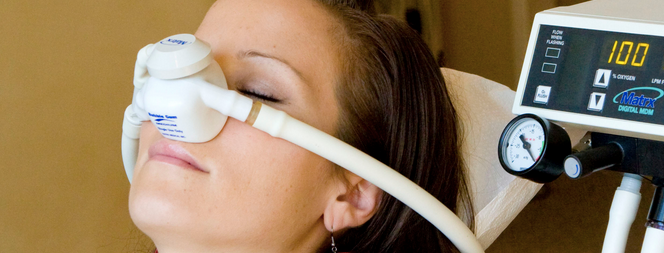Types of sedation dentistry
The four most common forms of sedation dentistry are:
1) Nitrous oxide
This is also known as inhalation sedation or laughing gas.
 This is the simplest approach and offers relaxation for treatment. You are awake but calm. For more information on laughing gas sedation dentistry.
This is the simplest approach and offers relaxation for treatment. You are awake but calm. For more information on laughing gas sedation dentistry.
2) Oral sedation
This is administered as relaxant pills or a liquid. It is a very good approach to sedation dentistry if your fear is procedure-specific (e. g. needles, extractions). This especially true if your fear will still exist in the presence of an empathetic dentist. It will be more powerful than laughing gas. However the effects could last for a few hours.
3) Intravenous (IV) sedation
IV sedation dentistry is the method of choice if you don’t want to be aware of what’s happening during a procedure.
Intravenous (IV) sedation is when drugs areadministered into the blood-stream through a vein. That’s what “intravenous” stands for. You are not really asleep, but you are not really aware of what is happening. We still need to give you local anesthesia. However, you usually don’t care.
We are one of a few dental offices that offer this service and it is administered by a registered anesthesiologist . There is a need for a special permit from the ministry of health for this. All of the hospital emergency equipment, monitoring devices and medication is on hand during sedation dentistry.
4) General Anesthesia
This is for either exceptionally long procedures, for developementaly disableled adults or small children. It is also for patients that do not want to be aware of anything while being treated. No dental shots are needed. Again, we are one of very few dental offices that offer this service and it is administered by an anesthesiologist. All of the hospital emergency equipment, monitoring devices and medicaton is on hand for this procedure.
التخدير العام